When choosing a smartphone, many buyers pay attention to the resolution of the camera. In every article related to cameras, I say that this is not the main thing, and this time I do not want to dwell on this in detail again. Therefore, we'd better talk about something else. Namely, in what resolution and with what frame rate it is worth shooting video on your Android smartphone. Is it important from any point of view or is it all more marketing than a practical necessity. At the same time, we will discuss whether it is worth using third-party video recording applications or is it better to trust trusted tools. Not everyone thinks about it, but questions like “30 fps or 60 fps?” I hear regularly. So let's answer them once and for all.
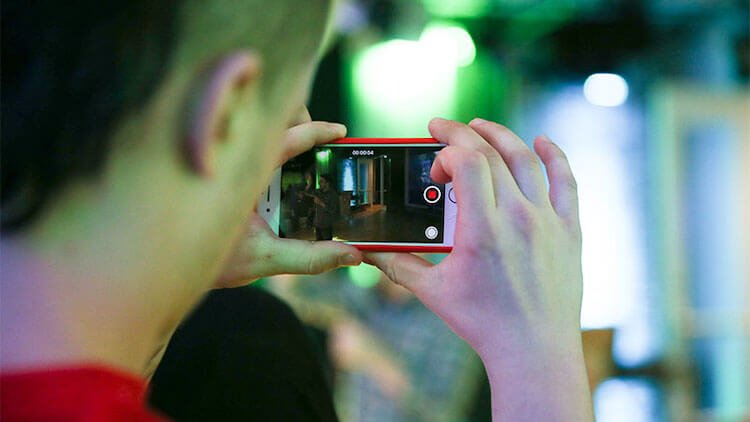
Shooting video with a smartphone is not difficult. The main thing is to keep it horizontal and make the correct settings.
What is frame rate
I've noticed for a long time that frame rate has the biggest impact on video quality and perception, other things being equal. The video remains the same, but it seems as if it is going faster, and the picture becomes kind of very fast. It looks like how to use a braking smartphone, and then take a new flagship. Even more, since I started using high frame rates when shooting, I just can't watch videos at a lower frame rate. Exceptions are perhaps only cinematic 24 frames per second – there is some kind of special charm.
So what is frame rate? It's simple – it's how many pictures the camera takes in one second and combines them into a video. Now for smartphones, the main types are 30 fps (frame per second – frames per second) and 60 fps. As I said, with a higher value, the picture becomes better, clearer and more detailed. Of course, this applies only to good cameras, as some cheap ones can “finish the frame”, artificially doubling their number.
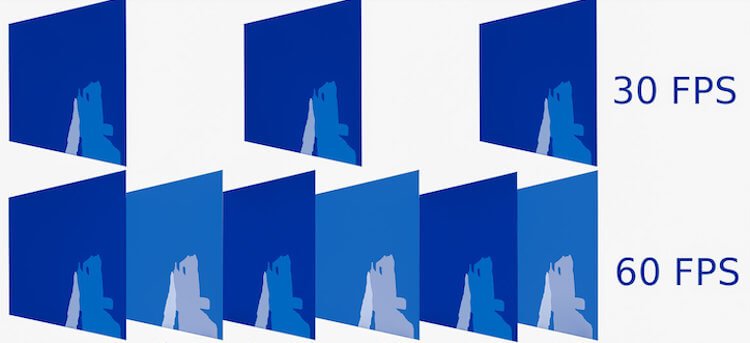
In principle, everything is clear with the frame rate.
It should also be remembered that the frame rate increases the volume of the video and makes it more demanding on resources. If you upload it to YouTube, you will need to have a faster connection to watch it. If you watch on a computer or phone, it will load the system more. If you transfer it to someone on a very budget device, it can be very slow.
There are also options for higher frame rates, like 120 fps, 240 fps and even more, and here we are already talking about slow-motion video. It will be played back at 30 frames per second, which means you will get 4x and 8x slowdown, respectively. We just divide the figure by 30 and get the multiplicity.
As I said, I chose 60 frames per second for myself. If the space on your smartphone allows or you do not often shoot, and you have a good smartphone, choose this option – you will not go wrong.
What resolution to shoot video
For shooting video, I almost always use FullHD resolution – 1920 by 1080 pixels. I see no reason to shoot something “everyday” in 4K or more. Such a video will take about 4 times more space, but there is no sense in it. If you watch the material on your smartphone, the difference will not pay off the amount of memory spent.
Shooting in 4K is good for post-production if you have a good camera. Cheap smartphones often trump with such a resolution, but in reality the picture turns out worse than when shooting in FullHD.
A lower resolution only makes sense if you have a device with an HD screen (720 by 1280 pixels) and you do not plan to transfer this video anywhere and never. If you watch it only on a smartphone screen, then this option can be very useful. At the same time, you will save space and system resources.
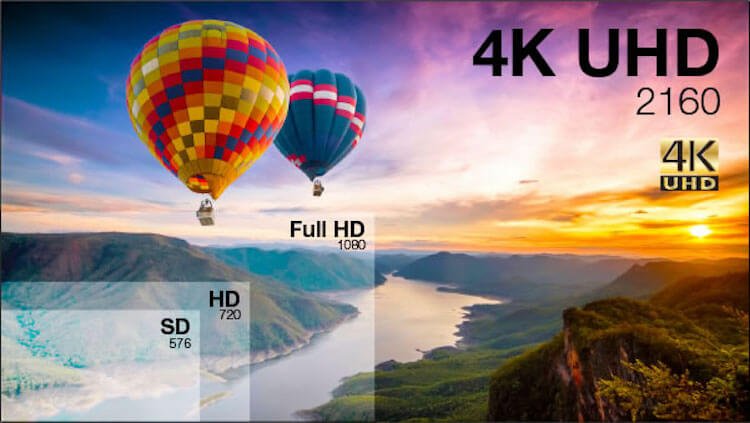
A side-by-side comparison of resolutions, but adware. You will still see everything, just the picture will be stretched more.
Some modern smartphones, such as the new generation Samsung Galaxy, can shoot 8K video. Don't get fooled by this marketing! I compared the picture with 4K. It turns out to be a little more detailed, but its quality still suffers. Moreover, the picture is based not on real data from the sensor, but on the calculated data.
And such video takes up more space than 4K, and even more so FullHD. True, if you follow the logic, then increasing the resolution from 4K to 8K should increase the file size by about four times, since the area of the picture becomes approximately that much larger with the same size of each point. But in practice this does not work. A minute of 8K video does take up a lot more space than a minute of 4K video, but not four times. All because of the bitrate.
What is video bitrate
If you do not complicate and do not translate some values into others, then we can simply say that the bit rate is how much a second of the video stream “weighs”. The bigger it is, the better, and top-end cameras shoot at such a bit rate that the picture contains as much information as a good RAW image. And this already means that it is very easy to edit and do color correction.
Also, with a high bitrate, the picture quality itself will be higher. It will have less noise, it will be brighter and overall will look a lot better. But such a video will take up more space.
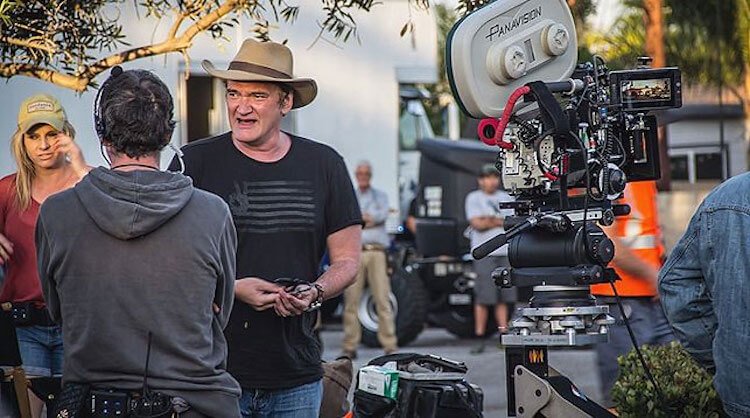
With such a bit rate as in Hollywood, you still won't shoot, but the more the better.
How long does one minute of video take in FullHD or 4K
This question is initially incorrect. It's all about bitrate. It is not so difficult to make a large number of points, the main thing is that the bit rate does not drop, otherwise the video stream will not carry so much information and the quality will be predictably lower. So 4K video can take up as much space as FullHD, but its quality will be much lower. This often happens in low-cost phones. For a high bitrate, you need high-speed memory and processing power, which state employees do not have.
This is why a minute of 8K video doesn't take up 4 times as much space as a minute of 4K video. It's just that 4K in normal phones is already close to the critical values of the speed of the internal memory, and at 8K you have to save. As a result, there is an improvement in quality, but it is not there. We sorted it out and closed it, but what about the applications.
Should you use video capture apps
Again, it all depends on the smartphone. If you have a top-end flagship from Samsung, Huawei, Xiaomi, Apple or other brands, then I wouldn't bother. If you are using something simpler, you can try some options. There is no single piece of advice, as some apps work great on one smartphone and poorly on another. In the end, you have to try.
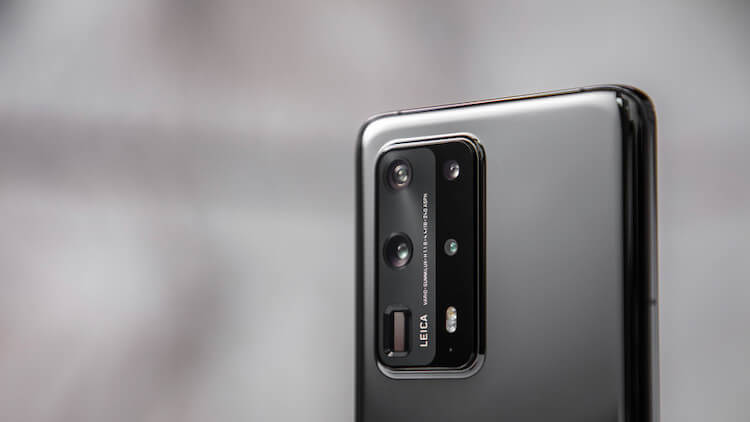
A good camera is the key to shooting success. But the software must also correspond to it.
The light goes through the optics of the camera and it should be good. Then it goes to the matrix and it should fix it well. But this is only half the battle. It is much more important to correctly process the signal. Good manufacturers don't skimp on camera software and get great pictures. Manufacturers who do not respect themselves save on this, and in their case it is better to use third-party, maybe even paid, options.
In any case, the main thing is to understand why you are shooting and, based on the given tips, choose the right one for yourself. If you have something to share, leave your comments below or in our Telegram chat.
